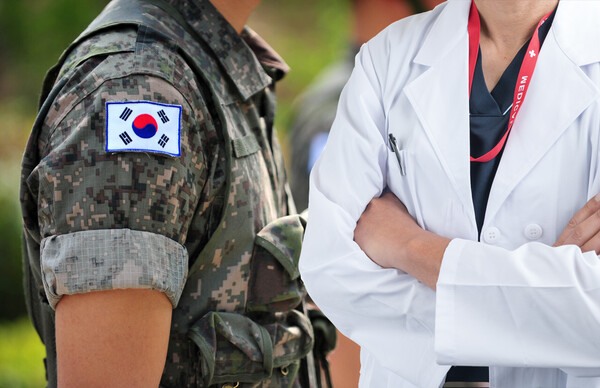The Ministry of Health and Welfare emphasized its intention to shorten the service period for public health doctors to help resolve a manpower shortage.
The minister and vice minister have also recognized this as a key task, the ministry said, adding that if a rapid reduction is difficult, a phased, long-term plan will also be considered.

Kwak Soon-heon, director-general of the Health Policy Bureau, made these remarks while discussing the ongoing “public health doctor shortage” issue during a recent meeting with medical and pharmaceutical journalists.
“The Ministry of Health and Welfare has conveyed to the Ministry of National Defense that a reduction in the service period for military surgeons is necessary,” Kwak said. “The minister and vice minister also deliver this opinion whenever the opportunity arises. In their judgment, there is no solution other than reducing the service period to address the shortage of public health doctors.”
Medical officers currently serve 36 months, compared to 18 months for regular soldiers, Kwak noted. The Ministry of National Defense argues that reducing the term only for medical officers would be unfair, given that all officers in the Republic of Korea serve for 36 months. However, the Ministry of Health and Welfare stresses that the training process for medical officers differs from that of other officers, he explained.
“We will continue to argue that the training process for residents to become specialists is different from other professions,” he said.
The ministry is also considering a plan to gradually shorten the service period.
“Our goal is to shorten the service period for public health doctors, regardless of the timeframe,” Kwak said. “Since doctors aim to become specialists, we proposed reducing the current 36-month period by 24 months, considering annual training. However, it doesn’t have to be reduced all at once.”
He added, “If reducing 12 months at once is difficult, a sequential reduction of two months per year is also an option. It is crucial to first announce a roadmap for shortening the service term to signal to current medical students that a reduction is possible.”
The ministry warned that if the current shortage of public health doctors continues, a significant cliff will occur starting in 2029, with a sharp decline in the number of physicians enlisting as public health or military doctors.
According to the ministry, the number of public health doctors allocated this year is approximately 250, falling to 200 in 2026, 150 in 2027, and 100 in 2028. The ministry regards 2029, when these allocations expire, as a point of steep decline.
It emphasized that due to the large-scale departure of medical students and the mass resignation of trainee doctors, the number of public health and military doctors eligible for enlistment in 2029 will be only 77, and in 2030, just 86. This is far below the typical 600 to 700 military doctors selected annually.
Related articles
- Oriental medicine public health doctors demand authority to give vaccinations
- Major hospitals in Seoul fail to fill trainee doctor positions
- Medical professors urge junior doctors to resume training, pledge full support
- 4,000 medical students chose active military service over public doctors or army surgeons
- Clinics, regional hospitals face staffing crisis as junior doctors return to training
- More medical students choose active-duty service amid government-doctor standoff
- 1 in 4 trainee doctors still work over 80 hours a week despite legal limits

